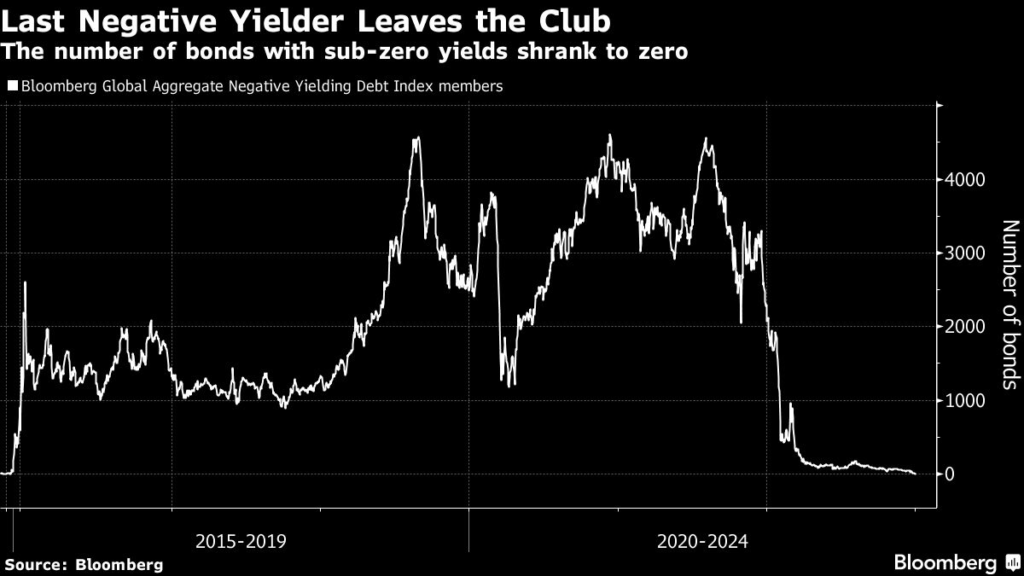The world’s pile of negative-yielding debt has vanished, as Japanese bonds finally joined global peers in offering zero or positive income.
(Bloomberg) — The world’s pile of negative-yielding debt has vanished, as Japanese bonds finally joined global peers in offering zero or positive income.
The global stock of bonds where investors received sub-zero yields peaked at $18.4 trillion in late 2020, according to Bloomberg’s Global Aggregate Index of the debt, when central banks worldwide were keeping rates at or below zero and buying bonds to ensure yields were repressed. Japan’s yields were the last to leave the sub-zero club because policy makers there had stuck so long with ultra-loose settings brought in even before the pandemic.
Investors are now betting the Bank of Japan — the world’s last uber-dovish monetary authority — is inching toward normalization. The European Central Bank exited its negative-rate policy in July, followed by its counterparts in Switzerland and Denmark in September. The Federal Reserve raised its benchmark by 4.25 percentage points last year, the most since 1973.
“The fact that Japanese bonds have finally left negative territory underscores how important BOJ developments will be for global bond markets over the course of this year,” said Prashant Newnaha, a rates strategist at TD Securities Inc. in Singapore.
Yields across the curve have jumped in Japan after the BOJ surprised markets on Dec. 20 when it doubled the yield cap for benchmark 10-year bonds to 0.5%. The shift has spurred more bets it will tweak policy further as inflation picks up and has driven up borrowing costs for the Japanese government.
Japan’s Borrowing Costs Double as 10-Year Auction Hits BOJ Limit
A Japanese government bond maturing in March 2024 had been the last security in the Bloomberg index, which tracks fixed-rate notes that have a maturity of at least one year, and its yield climbed to zero on Wednesday. The number of bonds in the index peaked in December 2020, at more than 4,000.
Why BOJ’s Small Tweak to Bond Yields Was a Bombshell: QuickTake
The quantity dropped to a mere 46 the day before the BOJ meeting, and had fallen to that solitary security as of Dec. 30.
The pool of negative-yielding debt collapsed in size last year, as traders braced for the ECB to kick off its tightening cycle. During 2022, the German two-year yield rose from around minus 0.6% to 2.8%, a record rise in data going back to 1991.
–With assistance from Libby Cherry.
(Updates with more context on European yields.)
More stories like this are available on bloomberg.com
©2023 Bloomberg L.P.










